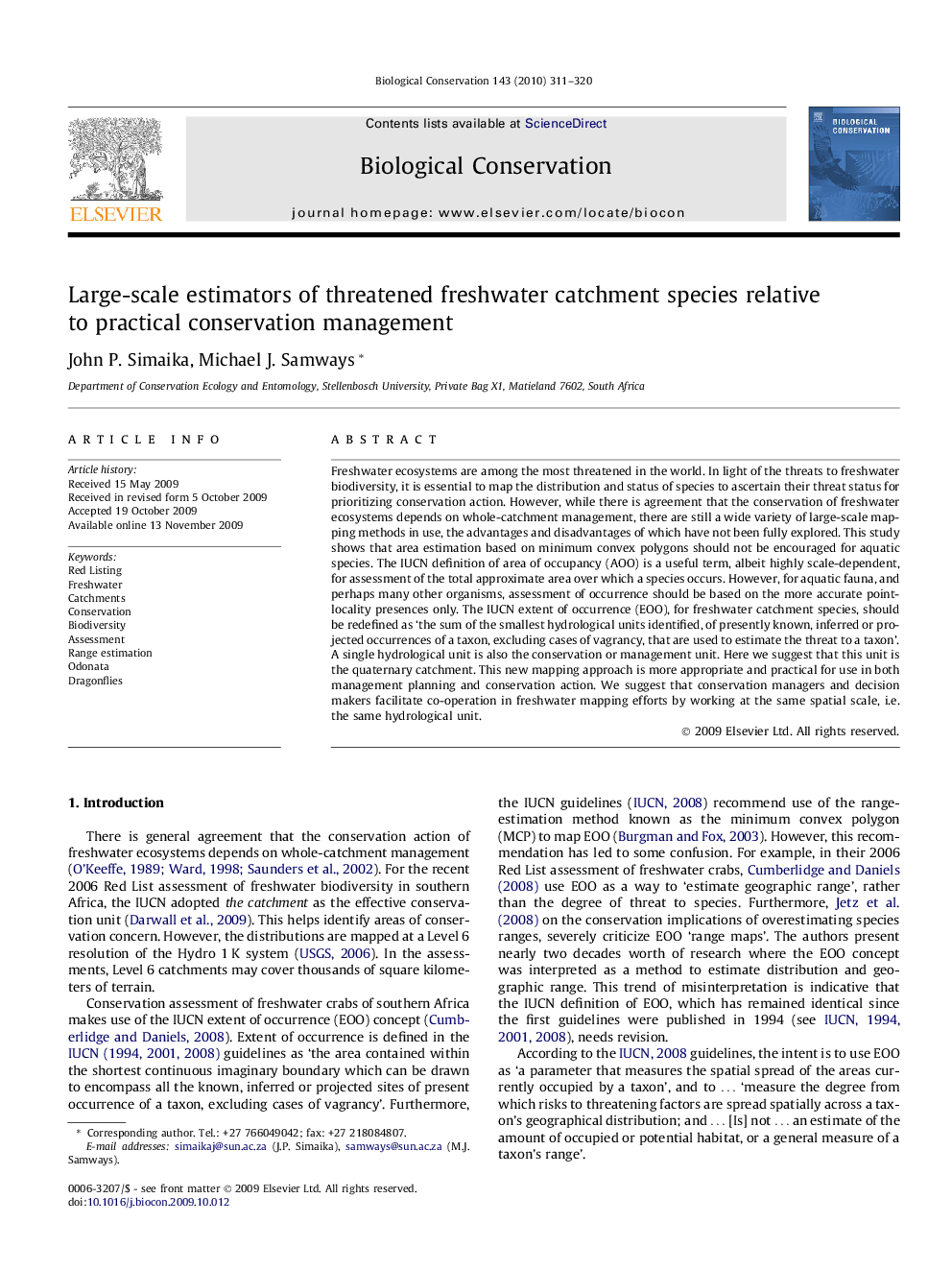| کد مقاله | کد نشریه | سال انتشار | مقاله انگلیسی | نسخه تمام متن |
|---|---|---|---|---|
| 4386502 | 1304568 | 2010 | 10 صفحه PDF | دانلود رایگان |

Freshwater ecosystems are among the most threatened in the world. In light of the threats to freshwater biodiversity, it is essential to map the distribution and status of species to ascertain their threat status for prioritizing conservation action. However, while there is agreement that the conservation of freshwater ecosystems depends on whole-catchment management, there are still a wide variety of large-scale mapping methods in use, the advantages and disadvantages of which have not been fully explored. This study shows that area estimation based on minimum convex polygons should not be encouraged for aquatic species. The IUCN definition of area of occupancy (AOO) is a useful term, albeit highly scale-dependent, for assessment of the total approximate area over which a species occurs. However, for aquatic fauna, and perhaps many other organisms, assessment of occurrence should be based on the more accurate point-locality presences only. The IUCN extent of occurrence (EOO), for freshwater catchment species, should be redefined as ‘the sum of the smallest hydrological units identified, of presently known, inferred or projected occurrences of a taxon, excluding cases of vagrancy, that are used to estimate the threat to a taxon’. A single hydrological unit is also the conservation or management unit. Here we suggest that this unit is the quaternary catchment. This new mapping approach is more appropriate and practical for use in both management planning and conservation action. We suggest that conservation managers and decision makers facilitate co-operation in freshwater mapping efforts by working at the same spatial scale, i.e. the same hydrological unit.
Journal: Biological Conservation - Volume 143, Issue 2, February 2010, Pages 311–320